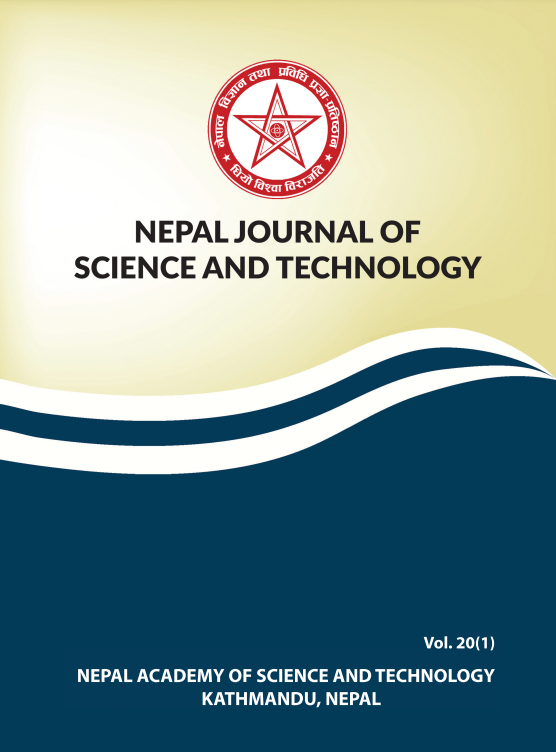Comparison of Relative Flux Density of Procyon in Visible Band
DOI:
https://doi.org/10.3126/njst.v20i1.43357Keywords:
Procyon, Schmidt-Cassegrain telescope,, Flux density variationAbstract
We present the photometric analysis of Procyon in FITS format using Aladin 9.0 by studying the luminous flux collected by a 16 inch Meade LX200GPS Schmidt-Cassegrain telescope placed at B.P. Koirala National Observa¬tory, Nagarkot, Nepal on April 18, 2017. The maximum and minimum diameters along the maximum and minimum flux regions are constructed. A graph is plotted using a Python custom program for the relative flux density along the two diameters. The flux density varies from the region of extremities of the diameters constructed from 0.25 to a peak of 248.50 in the relative unit. A significant bulging towards the north-eastern portion of Procyon is observed. While moving from the region of maximum flux towards the edge of the north-eastern section, we noticed the bulge prominently. The south-western portion and the other two directions do not show much variation. A possible explanation of the result is discussed.
Downloads
Downloads
Published
How to Cite
Issue
Section
License
Copyright (c) 2021 Bimal Subedi, Sameer Nepal, Ocean Shrestha

This work is licensed under a Creative Commons Attribution-NonCommercial 4.0 International License.
Authors retain copyright and grant the journal right of first publication.




